Main Topics
Introduction

38.2 million.
That’s how many Americans over the age of 12 have some degree of hearing loss in both ears, according to a study by the Johns Hopkins Cochlear Center For Hearing And Public Health.
38.2.
Million.
By definition, that’s not including children under 12. It’s also not including people with gradual hearing loss in just one ear.
38.2 million. Plus.
In case you’re wondering, those helpful folk at Johns Hopkins have done the math for us. We’re looking at over 14% of all Americans over 12.
That’s not evenly spread, of course. For every decade you live, you double your chances of having some degree of hearing loss in both ears. Hit 50, we dare you. 91% of Americans over 50 have some degree of hearing loss in both ears.
Who knew being alive was such a noisy business?
To be fair, the human ear and what it does is almost mind-boggling complex, and beautiful. People always go on about the human eye, and sure enough, that’s a thing of insane impressiveness too. All we’re saying is, the ear – it’s no slouch.
Did you ever stop to consider everything the human ear does?
Let’s take a quick tour.
A Word In Your Ear
The world is a whole lot of vibrations, existing whether or not anything can perceive them.
For instance, the world is full of light reflecting at various wavelengths, which the eye, through a complex mechanism of photoreceptors, rods, cones, a lens, and other elements, translates into images.
It then relays the images to the brain, where the brain recognizes them as “A Thing” and then attaches both a name and a set of associations to the thing.
“My house, my fence, my idiot dog, my idiot brother, his stupid hat…” etc. The light would have reflected off the objects whether we could ‘see’ them or not.
The proof of this is that lots of light reflects at wavelengths our eyes have not evolved to detect, but which other animals, and now our scientific tools, can see clearly, like infrared and ultraviolet.
The same is true of our ears. The world is full of vibrations, and our ears pick up a range of them and ferry them to the brain, which translates them into sounds.
Sometimes, the sounds translate into “Things” in our brain too – the sound of smashing glass makes us immediately think of the image of glass smashing, and leads us on to imagine the circumstances.
The creak of a floorboard when we’re tucked up in bed quickly becomes a possible intruder, and so on.
Likewise, there are parts of the sound spectrum that our ears have not been evolved to detect, but which other animals and our scientific instruments can hear perfectly well. That’s why your dog goes nutso when you blow a dog whistle.
But how do our ears do what they do? No, we’re not just curious. Knowing how they do what they do is the first step to understanding all the things that can go wrong with the process.
To understand hearing loss, first, we need to understand hearing.
Sound waves are hitting everything that’s in a direct line from the sound source, all the time.
Sound waves also reflect off objects and eventually dissipate if they’re not replaced by other waves from the same source on the same trajectory.
The Outer Ear
When the sound waves hit the human ear, they are gathered by the outer ear (the flappy mushroom-like things on the sides of your head) and funneled down the ear canal (a much smaller tube than they’ve been in previously, which intensifies the ‘volume’ of the heard sound.
At the end of the ear canal sits the eardrum. The eardrum is a thin, cone-shaped membrane. When the sound waves reach the end of the ear canal, they vibrate the eardrum.
Once beyond the eardrum, we’re no longer in the outer ear, but in the middle ear. Coming along for the ride?
The Middle Ear
The membrane of the eardrum touches the first of three important bones, connected together.
The bones are commonly known as the hammer, the anvil, and the stirrup, but if you want to understand doctors, their real names are the malleus, the incus, and the stapes, respectively.
You can pretty much think of them as a three-bone tuning fork, or as bone telegraph wires.
The vibration of the eardrum at any given frequency is transmitted to the malleus, on into the incus, and through the stapes. Beyond the stapes, we’re into the inner ear.
The Inner Ear
The stapes is in contact with the inner ear (known officially as the cochlea). The cochlea is shaped like a snail shell and is filled with both fluid and tiny hairs.
When the stapes vibrates, it transmits the sound to the fluid in the cochlea.
Are you ready for a little bit of science magic? So far, hearing has been impressive but straightforward – A touches B, vibrates C, right?
Watch closely. The next part will blow your mind.
The hairs in the fluid within the cochlea are like stalks of wheat in a breeze, they move and bend depending on the vibration of the fluid. And they turn vibration…into electrical pulses.
Blink again. What we said is true. Hairs in your inner ear move according to the vibration of their fluid medium, and then they turn that movement into electric pulses.
And not of course just any electrical pulses. Electrical pulses with enough character and information to be decoded as particular sounds in the brain.
The Brain
The electrical pulses are transmitted to the auditory nerve, and from there up to the brain.
The brain does its thing and translates the impulses into the sounds we recognize, gives them names if they’re identifiable, and crowds in with subsidiary information, governing our reaction to the sound we hear.
An operatic high note. The beginning of Beethoven’s 5th Symphony. The song of a blackbird. Breaking glass, a creaking floorboard, the stupid things our brother’s saying.
All of it different, all of it interpreted in the brain, but all of it happening because of this long process of vibration, transmission, a little science magic, and translation.
This process begins between 18-24 weeks after conception, so a fetus in the womb will begin to hear its inner and outer world.
When the child is born, it will take up to another six months to hone ears that have been accustomed to hearing in a liquid world to hear and identify crisp individual sounds transmitted through the air of the outside world.
And it will keep happening, relentlessly, reliably, sometimes your whole life through.
Why have we told you all this?
Points Of Vulnerability
Firstly, so you have a basic idea of how incredible hearing is. And secondly, to show you all the potential weak points in the chain. Think about all the things that have to happen for you to correctly hear sounds.
The sound wave has to be able to get from the outside world into the ear canal. Severe damage to the outer ear can affect its ability to do that.
The ear canal has to be able to transmit the soundwave to the eardrum. Blockages, either of earwax or technically any other foreign body can stop you hearing, or muffle your hearing, at that point.
The eardrum has to be working, and its membrane fairly tight, to properly vibrate when the soundwave hits it.
Perforate the eardrum with sudden loud bangs, or gradually slacken the eardrum by increasing old age, and you stop it working.
Perforated eardrums are more instantly noticeable, and result in severe loss of hearing. Slackening results in slower, more gradually degrading hearing.
All three of the bones in the middle ear have to be working, connected, and able to transmit the vibration from the eardrum to the cochlea.
If they don’t, it’s like a dropped connection on a telephone line – both ends have the potential to connect, but they can’t communicate because the medium in the middle is malfunctioning.
In the cochlea, the fluid needs to be healthy, so it can transmit the vibration correctly to the hairs. Infections can attack the fluid and stop it from vibrating with the frequency you expect.
The hairs in the cochlea need to be standing up and able to move. As with the fluid, infections can stop them working, so they can’t translate the vibrations into electrical pulses and pass them on to the auditory nerve.
The auditory nerve itself needs to be working correctly, passing the pulses up to the brain. Many infections can attack the auditory nerve and interrupt transmission.
And finally, the brain itself needs to be undamaged and working properly to translate the impulses into intelligible, understood sounds.
There are a lot of links in that chain. That means there are a lot of points of weakness.
Welcome to the jungle that is hearing loss.
Hearing Loss: An Overview

Symptoms of Hearing Loss
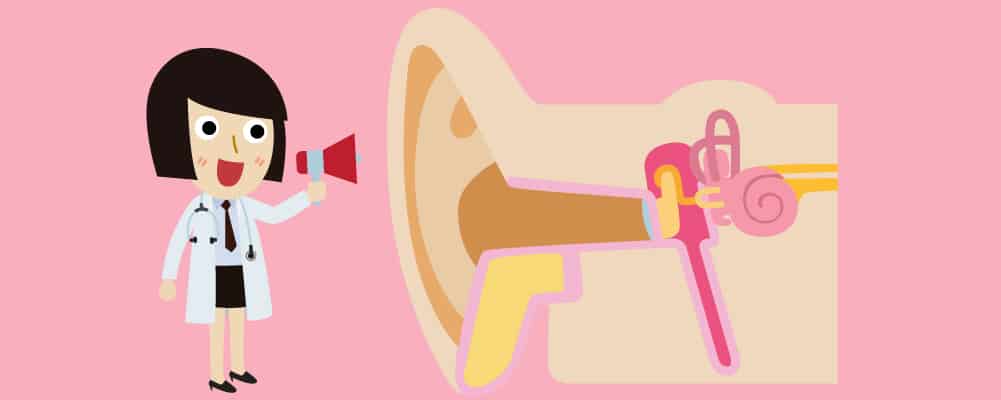
Hearing loss is like the common cold, in that the reason it’s difficult to deal with is that ‘hearing loss’ is a collective term for any and all of the effects of a range of different causes.
Any of the things we’ve mentioned can result in hearing loss to some degree. Depending on which cause is at work, you may well get different effects on your hearing.
There are obviously two different main categories of hearing loss, sudden hearing loss and gradual hearing loss.
Sudden hearing loss in some respects is the easier to deal with, because there’s something black and white about it. You will know – immediately and without fear of contradiction – if you wake up one morning and suddenly can’t hear.
And yes – not to be alarmist, but that does happen. Likewise, if you rupture your eardrums, you’ll know almost immediately that the world and the way you perceive it has changed.
Because sudden hearing loss is so black and white, we’ll come back to it in more detail in a little while.
The more insidious, the more sly and subtle form of hearing loss is gradual hearing loss. You might not notice this is happening to you until you’re relatively far down the line of loss, because of the boiled frog paradigm.
The what-now?
The boiled frog paradigm. It’s not actually true, but the boiled frog paradigm is the notion that if you put a live frog in a pan of boiling water, it will leap immediately out again, instantly aware that it’s not having a good day.
Sudden hearing loss equated to the boiling water condition.
But if you put a frog into a pan of cold water, it will happily stay there. And then, if you keep gradually increasing the temperature over time, the frog will adjust to each increase.
It will keep adjusting until – for whatever demented reasons you’d ever want to do this – you have a boiled, frog, which never stirred at any point.
Gradual hearing loss is like the occasional turning up of the heat. You compensate, you get used to any level of hearing loss until the next intensification of the issue occurs.
And frequently, people will change their lives, and even their personalities, rather than recognize quite how hot it’s getting in their pan.
At first, you probably won’t recognize the muffling of speech and some other sounds. Like the first raindrops of a deluge, you brush off the muffling. It’s nothing – right?
You might find you have to concentrate, have to apply actual thinking power or watch lips more than you used to if you want to understand some words.
Consonants might go oddly missing when people speak. They are the sharp notes in any language, the Bs, the Ts, the Cs and Ds – they have sharper sound profiles than vowels, because they usually involve rearranging the tongue.
If you realize you’re missing out on consonants, it could indicate a loss of some hearing.
Everyone has that mumble friend, sure. But if you’re frequently having to ask people to speak up, or speak more clearly so you can understand them, it may well not be the fault of their diction, but an indicator of some hearing loss.
Remember we said people change their habits or their personality to avoid acknowledging hearing loss?
How loud is your TV? Steal a glance at the other people watching with you. If they look like they might be wincing, you may have the volume higher than their as-yet-normal hearing can bear.
Another tell-tale sign here is if people have stopped watching TV with you, letting you enjoy your programs at the volume that’s right for you. You may have some hearing loss.
If you find conversations getting harder, if you’re having to think more about what it’s likely was said, rather than hearing for certain what was actually said, it’s fairly certain you have some hearing loss.
If, instead of that, you find yourself withdrawing from or avoiding conversations because they’ve become difficult – hearing loss.
How do you do in crowded settings? Do you struggle to pick out conversations above the rumble of chatter? It might seem unfair to call that a hearing loss – you can hear the rumble just fine, probably.
But if you’re not able to pick out crisp, specific conversations against that noisy background, you may well have some hearing loss.
As with conversations, if you find yourself making excuses to not be in noisy situations, one of two things is probably happening.
Either you’re becoming introverted, or you might be overcompensating for the difficulty of a degree of hearing loss.
Why do we not notice these degrees of change?
Partly, because they’re gradual, and we usually have enough time to come to terms with each change as ‘just the way things are.’ Why is our TV so loud?
Because it just is, that’s why – that’s the level it needs to be at, so the dialogue is crisp, right? It’s human nature to assume that difficulties are external, rather than anything to do with our internal systems.
But also partly because we’re afraid of what we’ve learned about hearing loss. We associate hearing loss with aging, with the loss of vitality and vigor.
Naturally, the statistics about hearing loss in the over-50s don’t help with that perception, but we seek to avoid any connection between ourselves and aging.
So, frequently, we’ll change our lives rather than acknowledging the truth of gradual hearing loss.
That leads both us, and frequently those around us, to suffer unnecessarily to accommodate our increasing hearing loss, when taking action early might well be better for everyone.
We’ve outlined quite the spectrum of potential symptoms of gradual hearing loss. Unsurprisingly then, they can be symptoms of various causes of hearing loss.
When it comes to causes, it’s helpful to add back sudden hearing loss into the spectrum of what we’re looking at, because it shows the degree of loss and the distinct causes that can impair our hearing.
Causes of Hearing Loss
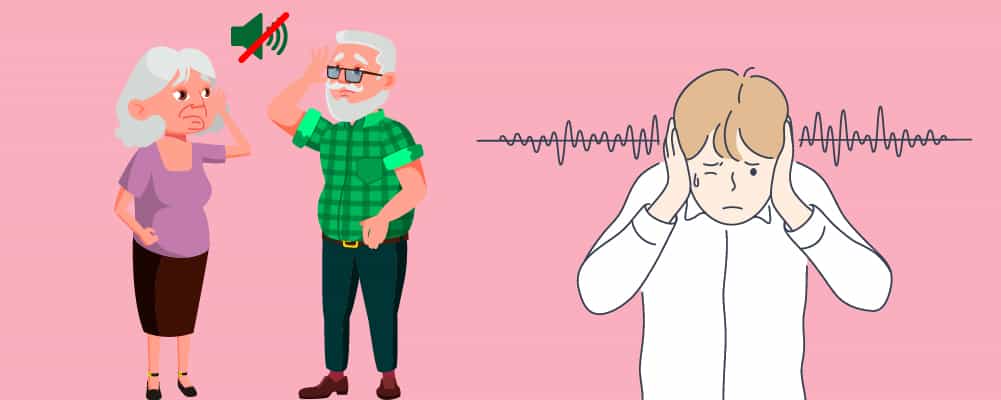
Earwax
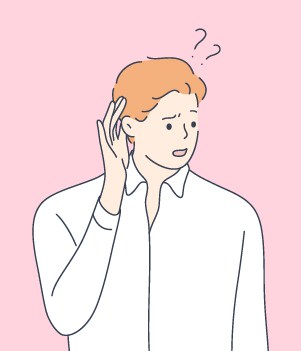 Let’s talk about earwax.
Let’s talk about earwax.
We know – we just saw you cringe. And that’s part of the problem. People equate earwax with grime, somehow, with a lack of hygiene.
People probably need to get over themselves.
Earwax (or cerumen, to give it its official name) is firstly not wax.
It’s not some mold-like growth that infects people with insufficient personal hygiene.
It’s a substance produced by your ears, and it’s produced for your own safety.
In the same way nasal mucus is produced to trap dust and particles in your nose, earwax is produced to stop the same detritus from getting into your middle ear.
Everyone who has ears has earwax, in the same way everyone who has toes has toenails. It’s part and parcel of the deal.
Where it becomes a problem is when it’s either produced in too great a quantity or where over time it becomes impacted in the ear canal. The result of which is pretty much like building a wall across a corridor.
Instead of the sound waves reaching the eardrum, the reach the earwax instead, and are either entirely repelled back the way they came before the eardrum is vibrated, or such vibrations as reach the eardrum are weakened, resulting in less vibration, meaning when the brain eventually gets the sound signals, it judges them to have been, effectively, ‘whispered’ instead of spoken or sung at their actual volume.
Weaker or more distant sounds may not get through the barrier at all.Earwax can be dealt with by some over-the-counter drops if it has yet to become too impacted.
Impacted earwax can be caused by a whole host of things, from autoimmune diseases like lupus to infections like swimmer’s ear, to simply overproducing earwax.
If you need help to get rid of impacted earwax, your doctor will be able to either irrigate your ear canal with water, and prescribe regular over-the-counter treatments to stop the buildup impacting again, or might even use special tools to break up the impacted clot of earwax.
Either way, you should notice an improvement in your hearing immediately.
Ear Infections
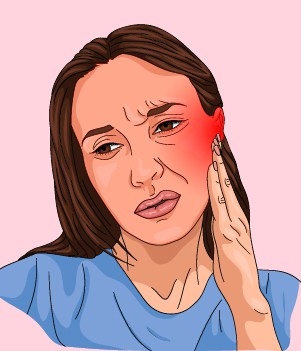 These are many and varied.
These are many and varied.
The most common ear infections, thankfully, only cause short-term hearing loss.
Outer ear infections (which include the ear canal, don’t forget) are more commonly known as ‘Swimmer’s Ear.’
That’s because they’re most frequently developed after involvement with water, and also because their symptoms include the kind of muffled hearing you get when you’re underwater.
Usually, they’re bacterial, though they can also have a fungal dimension.
Get your doctor to check your ears and they’ll be able to clear any blockage, treat any tenderness of the ear canal and use antibiotic drops to clear up the infection.
Middle ear infections are frequently caused by allergic reactions. They can cause a build-up of fluid in the chamber of the middle ear, where the three oscillating bones are held.
If you imagine playing a violin string underwater, you get a sense of the effect of fluid in that middle ear chamber on the conductivity of sound vibration.
Symptoms can include slight dizziness, fever, and ear pain, like a toothache that’s even harder to get at.
Middle ear infections are nothing to take lightly – too many infections or too much fluid in the middle ear can pressurize and even rupture the eardrum, leading to more and bigger hearing loss on a more permanent basis.
While most doctors will hold off treating them with antibiotics in the first instance – most middle ear infections are viral, and so wouldn’t respond – if the problem persists, your doctor will be able to take a closer look, to find the direct cause of the infection.
If you’re extra-specially unlucky, you might instead get an inner ear infection, like labyrinthitis.
This is usually caused not by topical infection – it’s not that the infection comes from your outer ear and works its way inside – but by systemic infection, like influenza or mono.
If the infection attacks the inner ear, as well as the hearing loss, you might notice other symptoms like nausea, vertigo, or vomiting, because it’s attacking the region that’s also responsible for balance.
If you get symptoms like this, do not hesitate to contact your doctor. Again, with swift intervention, usually steroid-based, it’s possible to defeat the viral infection and restore the hearing loss.
If left untreated, an inner ear infection can lead to permanent hearing loss though, so be vigilant.
Damage To The Inner Ear
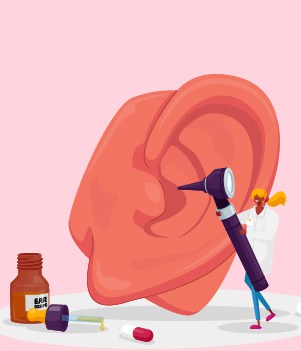 Damage to the inner ear may seem like an unlikely danger. After all, the inner ear or cochlea is…well…inner.
Damage to the inner ear may seem like an unlikely danger. After all, the inner ear or cochlea is…well…inner.
It’s protected from all the outside forces that might potentially cause it damage.
Ah, if life were only so simple.
The truth is, the hairs that do that scientific magic trick of turning vibration into electrical pulses, and the nerve cells that carry those pulses to the brain, are subject to both damage and wear and tear.
This is one of the most significant forms of age-related hearing loss – the hairs and nerves simply wear out over time.
If the hairs don’t translate the vibration into electrical impulses, what you have is a head full of vibration.
Believe it or not, that’s not always a dead loss, because your skull will sometimes carry the vibration over to your other ear(!), but in terms of direct connection, you’ll notice the drop-out of hearing.
Likewise, if the nerves don’t transmit the pulses to the brain, or don’t do it as effectively, you’ll have an appreciable lowering in the quality of your hearing.
It’s not just aging that can have this effect. Loud noises, either single-instance or persistently over time can wear down the hairs and dull the nerves.
The effects of this sort of damage usually include the disappearance or muffling of higher tones from your hearing range, and you might also struggle to pick out crisp conversation against the burble of background noise.
While there are things that can be done to mitigate the delivery of sound waves intact to the cochlea, the damage or wear on the hairs and nerves cannot – at least at present – be repaired or undone.
Ruptured Eardrum
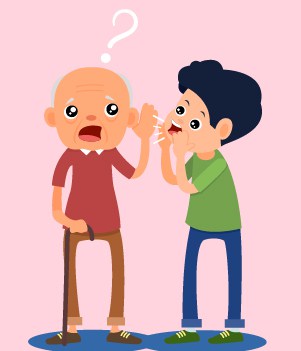 To understand the effect of a ruptured eardrum on your hearing, take a child’s toy drum and beat it. Hear the sound it makes.
To understand the effect of a ruptured eardrum on your hearing, take a child’s toy drum and beat it. Hear the sound it makes.
Then put a hole in the middle of it and hit it again (ideally buy your child a new drum if you do this experiment, or there’ll be tears before bedtime).
You’ll notice the vast difference in tone that comes from puncturing the drum-skin.
Now imagine that, but much smaller and inside your head. That’s a ruptured eardrum.
It’s especially prone to causing hearing loss because the way the hearing system is set up is that the three bones of the middle ear depend on the transmitted vibration from the eardrum.
If the eardrum is ruptured, those vibrations are either much less or possibly non-existent, meaning hearing is either muffled, distorted, or stopped in its tracks.
And the eardrum is also a particularly vulnerable piece of the puzzle.
It can be ruptured by loud noises, popped by a cotton bud, stressed to rupture by a sudden change of pressure, or pressurized to rupture by the fluid that forms in the middle ear during an infection.
Fortunately, very often, a ruptured eardrum will self-repair over the course of a few weeks.
If it doesn’t, your doctor might apply a patch to promote regrowth, and if that doesn’t look like it might work, there’s a straightforward surgery that can be done, called a tympanoplasty.
Risks That Could Cause Hearing Loss
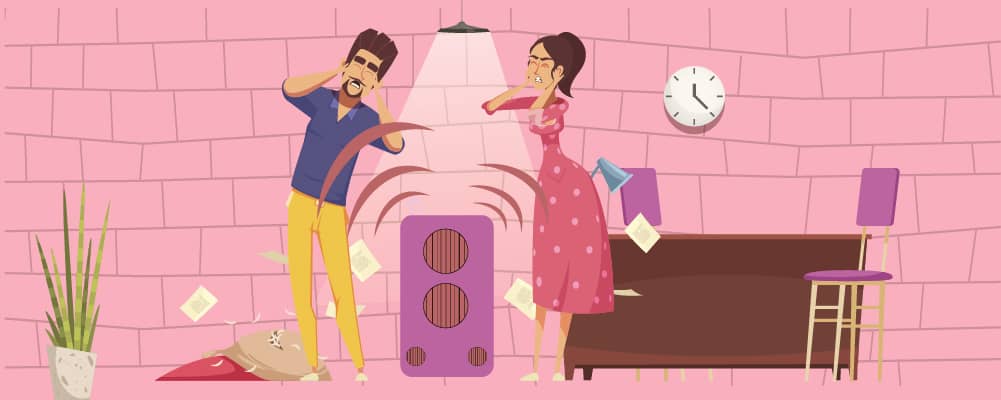
Now we know the main ways that hearing loss can happen. But hearing loss is an insidious thing. It can be exacerbated and aggravated by a number of things, some of which affect your hearing instantly, and others by slow degrees over years.
Loud Music
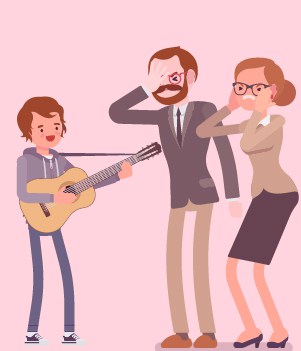 Who doesn’t like to rock out, right?
Who doesn’t like to rock out, right?
Sure, but loud music (of any kind – this is not just a note for rockers and metalheads) can damage your hearing if it’s over a certain level of decibels and prolonged over time.
While noises louder than 70 dB over a prolonged period will begin the process of damaging your hearing, music over 85 dB for eight straight hours is enough to press the turbo boost on your hearing loss.
That’s the case whether there are 85dB hitting your ears at a live gig, through your high-powered speakers, or directly plugged into your ears through earbuds or headphones.
It’s worth noting that concert and earbud maximums tend to exceed these safe levels, so it’s down to you to either back off the max or even, if you’re going to a concert that promises loud music, to wear some sound dampening earbuds.
They won’t in any sense kill your pleasure. They might, just possibly, save your hearing.
Rock out all you like, but do it safely, give your ears a chance, take some breaks, and maybe, in between the life-affirming power bangers, consider giving the dial a downward tweak.
Occupational Noise
 If you’re in an occupation where there’s a constant or regular noise threat, the chances are you already know it, because without ear protectors, it will be painful, irritating, and difficult to concentrate.
If you’re in an occupation where there’s a constant or regular noise threat, the chances are you already know it, because without ear protectors, it will be painful, irritating, and difficult to concentrate.
Construction sites will usually, and should always, provide ear protectors for people working on loud equipment.
As with music, 85db and upward is your hearing loss danger zone, so any large and many smaller but noise-heavy machines involved in construction, demolition, drilling, and the like is likely to require you to use ear protectors if you don’t want to suffer undue hearing loss as the price of doing your job.
Recreational Noise
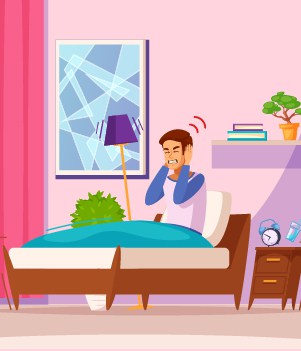 One word – guns.
One word – guns.
Firing guns is not only a long-term hearing threat, it can actually be an immediate hearing threat.
The facts on guns and hearing loss are simple.
While 85dB is the hearing safety threshold for loud noise over time, any noise louder than 140db can damage your hearing in a heartbeat.
Most firearms on sale in America today make a noise over 140dB every time you fire them.
Some larger bore weapons intensify that up to 175dB, which is enough to have your eardrums begging for mercy.
Feel free to do your own math – but ideally, do it while wearing ear protectors.
Recreational noise threats aren’t only about guns though. Motorbikes, dirt bikes, quad bikes, you name it – if it gets your blood pumping and the tires squealing, there’s every chance it’s cruising into the noise danger zone.
Be smart – if you’re going to pursue these fun hobbies for hours on end, protect your hearing for years to come.
Aging
 One of our first points was that aging is a big factor in hearing loss.
One of our first points was that aging is a big factor in hearing loss.
For every decade you age, there’s a doubling of the numbers of people with hearing loss.
What makes this tricky is that there is likely to be a noise factor playing into those numbers – ten more years of noise exposure will probably make you more susceptible to hearing loss anyway.
But there are likely complicating factors in aging itself which deteriorate your hearing.
The truth is, the jury’s still out on exactly what about aging increases the likelihood of hearing loss, beyond the longer exposure to noise.
Work is ongoing, but one thing seems evident. There are a handful of usual suspects, any of which might be an important part of the picture of age-related hearing loss.
Some Illnesses
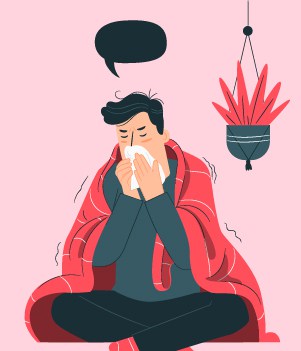 Usual suspects, you say? Try some of these for size.
Usual suspects, you say? Try some of these for size.
It might at first feel like a catch-all or cop-out, but there are conditions more likely to appear in older age which probably exacerbate every negative thing going on in your body.
Diabetes
More than 34 million Americans have diabetes. That’s almost as many as have some hearing loss in both ears over age 12. Of that 34 million (and rising), between 90-95% of them have Type-2 diabetes.
Type-2 diabetes most often develops in people over the age of 45.
While as yet, there is not a proven relationship between Type-2 diabetes and age-related hearing loss, researchers are looking into the idea, because Type-2 diabetes is known to attack other nerves, in the hands and feet (neuropathy) and particularly in the eyes (retinopathy).
So while it can’t yet be proven to be a factor, Type-2 diabetes has an age correlation and a history of attacking nerves.
High Blood Pressure
High blood pressure or hypertension is a condition that tends to develop in older people. It’s also one of the potential causes or aggravating factors in tinnitus.
Although tinnitus is not a cause of hearing loss in itself, it does negatively affect the degree to which we can hear external sounds, so there may well be a correlation between high blood pressure and age-related hearing loss.
Some Medications
 There are several medications that, if taken in large enough quantities, can result in hearing loss, either transitory or permanent.
There are several medications that, if taken in large enough quantities, can result in hearing loss, either transitory or permanent.
This includes:
- Aspirin, if taken in quantity (8-12 pills daily)
- Some antibiotics – particularly the aminoglycosides
- Loop diuretics, like Lasix, used to treat high blood pressure (we know, irony’s a killer)
- And some cancer treatments
The logic of these medications still being prescribed despite carrying hearing loss as a potential side effect seems to be that they’re each used to treat something more acute, which outranks hearing loss in the urgency of treatment.
Preventing Hearing Loss

So what can we do to ensure we lose as little of our hearing as possible?
| Hearing Loss Prevention Plan | |
| Get regular hearing tests | Forewarned is forearmed in the battle to maintain our hearing at peak efficiency.
Ensure you get regular check-ups, whether or not anything feels wrong or different. |
| Protect your ears | Whenever you’re in loud noise environments, use ear protectors or noise dampening earbuds.
In colder weather, wearing ear muffs outdoors to avoid potential infections can be a useful precaution too. |
| Avoid potential risks | Don’t take unnecessary risks – turn your music down when possible.
Ideally, eat healthy food and exercise regularly to stave off Type-2 diabetes and high blood pressure. |
Living With Hearing Loss: Hearing Aids

OK, so you have hearing loss. What now? Is your life over? Are you doomed to sit in a corner and rot?
Not at all. There are two main approaches to boosting the hearing you have, so you can get the most out of life and carry on as normal.
The first approach is hearing aids.
No. Absolutely not. Hearing aids are in no sense proof that you’re getting old. They’re a tool to help your senses back to where they should be.
They’re the aural version of contacts, and nobody thinks contacts mean you’re getting old.
So what are hearing aids, and how do they work?
A hearing aid is a small, battery-powered device worn on the outer ear, often extending into the ear canal, which helps boost the audibility of sounds in the first stage of hearing.
A hearing aid is usually made up of three basic parts, and a range of additional features.
Every hearing aid has a microphone, an amplifier, and a speaker.
The microphone picks up sound waves around the wearer.
The amplifier, being an invention of relatively limited imagination, amplifies it, and the speaker ‘speaks’ or transmits the amplified sound, usually directly into the ear canal.
That’s the very basic definition of a hearing aid. Within that definition though, there’s a world of differentiation.
There are several styles of hearing aid, to begin with, from a ‘Behind The Ear’ (BTE), a mini-BTE (as standard, but smaller), an ‘In The Ear,’ and ‘In The Canal,’ and a ‘Completely In Canal.’
Each of these styles is suitable for users with different hearing boost needs.
Behind The Ear and In The Ear aids are used by people with mild to profound hearing loss, for instance, while Canal aids tend to be most useful for people with mild to moderate hearing loss.
Because they’re generally smaller, the Canal aids are usually lower-powered, which is what makes them suitable for those with lesser degrees of hearing loss.
Beyond the different styles of hearing aid, the development of hearing aid technology has been opened to the free market.
That means there is an enormous number of companies differentiating their hearing aids with all the latest high-tech capabilities in audiology.
Want aid with a power-boosted microphone? Not a problem. Want aid with plenty of volume settings and graphically equalized environment modes?
Easy. Want one that picks up and boosts conversations in a crowded room? Basic.
One with a wifi-enabled phone app that lets you choose the direction/s on which the microphone should concentrate, so you can listen attentively to the person on your left, and on the movie screen ahead of you?
Done…
There are a thousand and one additional variations you can have programmed into your modern hearing aid.
Talk to your audiologist about the style that’s best for your level of hearing loss, and maybe have an initial discussion with them about the kinds of features you’d like in a hearing aid.
Happy hunting!
Living With Hearing Loss: Cochlear Implants
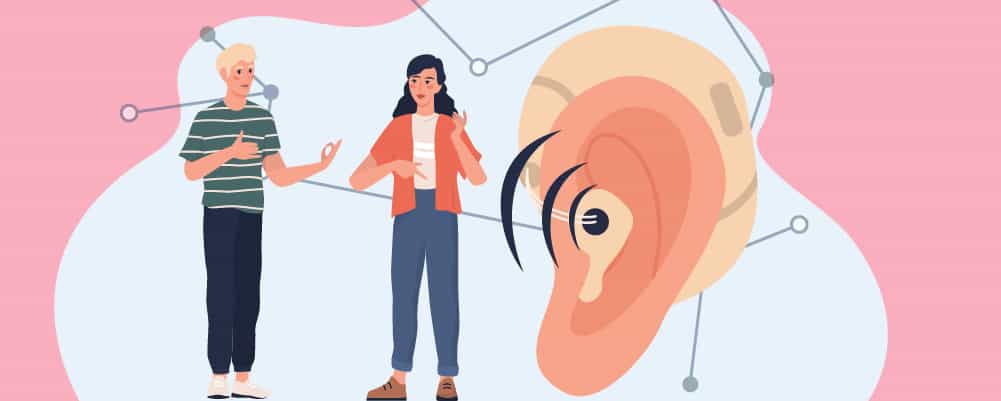
The other route when living with hearing loss is to go deeper and more permanent, with a cochlear implant.
A what-now? The Cochlea is the snail-shell-shaped part of the inner ear, right? Are we replacing parts of our ear with electronics now? Is this some Star Trek level malarkey?
Basically, yes to all.
A cochlear implant is a surgically implanted device that does the job the cochlea, with its ‘magic’ hairs, usually does.
If you have severe to profound sensorineural hearing loss (hearing loss as a result of issues in the inner ear – which incidentally accounts for around 90% of all hearing loss), it can give you a different way to hear things.
Do you remember how the hairs in the cochlea send electrical pulses to the auditory nerve? Think of a cochlear implant as a kind of bypass, which cuts the hairs out of the equation and directly stimulates the auditory nerve.
Yes, absolutely, it’s more extreme than any hearing aid will ever be. It’s a surgical process, for one thing (albeit an outpatient surgery), and it has both an implanted part and a part that sits behind the ear.
It’s also worth managing some expectations before you decide to go for this option. Will it give you a sense of environment hearing better than what you have before surgery?
If you’re a good and likely candidate to have one fitted, yes, it will. Will it give you anything close to ‘normal’ hearing? Sadly not.
It might be a Star Trek idea, but it’s not yet at anything like a Star Trek level of sophistication. As such, it’s worth considering in sober detail whether it’s a procedure that’s right for you.
Who’s a ‘good and likely candidate’ for a cochlear implant? Technically, anyone with severe to profound deafness can have a cochlear implant fitted, but there are caveats.
It’s now being successfully given to children little more than a year old. It’s especially useful to them because they have only had a short and limited experience of having a hearing loss or impairment.
As such, they’ve had little time to get used to it or compensate for it. That means the implant, and the level of hearing it provides, becomes a ‘new normal’ for them relatively fast.
The same is true of adults – a cochlear implant works best on those who have had their hearing loss for a relatively short time. As such, it’s better for those who have sudden and/or total hearing loss.
The longer the hearing degrades, the less effective a cochlear implant is likely to be.
What does the process of getting a cochlear implant involve?
The internal part – the literal ‘implant’ – is surgically inserted under the skin behind the ear. It consists of a thin wire and a set of electrodes, leading to the cochlea.
The wire sends signals to the auditory nerve, as the biological cochlea usually does. The external element sits behind the outer ear and broadcasts the sounds it picks up to the implant.
The cochlear implant gives a better sense of sounds compared to profound hearing loss but still takes some training to allow the user to process the sounds into, for instance, particular words.
There is also a relatively new variant of the cochlear implant, called a hybrid cochlear implant.
That looks and feels for the most part like a standard cochlear implant, but also boosts low-frequency sounds, like a standard hearing aid.
Previously, if standard hearing aids were still of some use to you, you were regarded as a poor candidate for cochlear implants.
With the hybrid option, it could well deliver the best of both currently available worlds. It’s probably worth investigating the potential of a hybrid cochlear implant.
Let’s talk briefly about the potential risks of getting a cochlear implant.
First of all, it’s important to say that cochlear implant surgery is usually safe, usually works, and usually gives you an improvement in your hearing.
Occasionally, though, as with most surgical procedures, it can have side effects.
In the case of cochlear implant surgery, those side effects can include bleeding, swelling, tinnitus, infection risk, and – because of the closeness to the eustachian tubes – changes in taste, among others.
It’s always wise to be aware of what could happen, any time you submit yourself to surgery. But in most cases, a cochlear implant can make a real difference to people with severe or profound hearing loss.
Summary
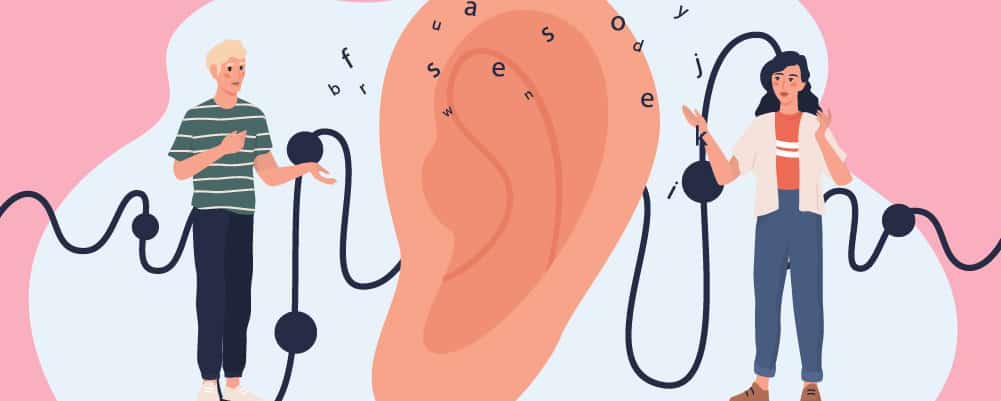
Hearing loss is a reality for tens of millions of adult Americans. Whether it’s a sudden change or a gradual, creeping acclimation to a lessening of our hearing, it’s something we have to handle the best way we can.
There are things we can do to slow down or limit the likelihood of our being affected by hearing loss. And if and when we need assistance, both hearing aids and cochlear implants are developing and improving year on year.
The future of treatments for hearing loss could very well involve gene therapies too, meaning hearing loss ten or twenty years from now might be a whole different prospect to what it is today.
Here’s to the future.

Leave a Reply